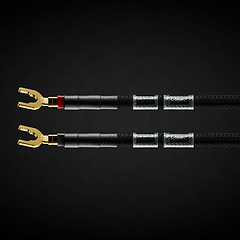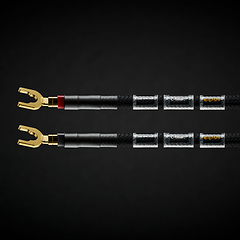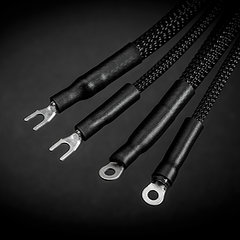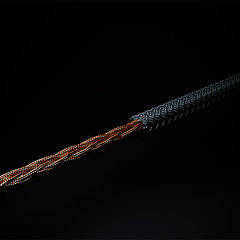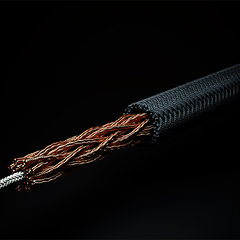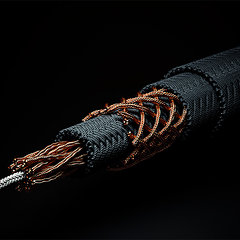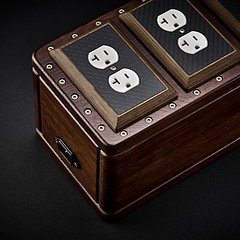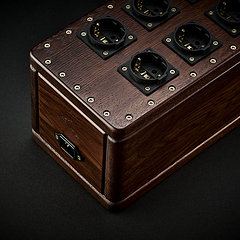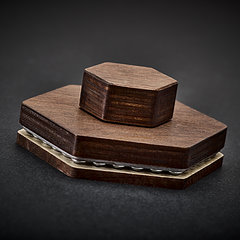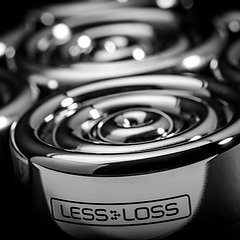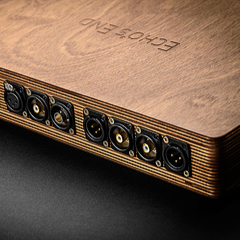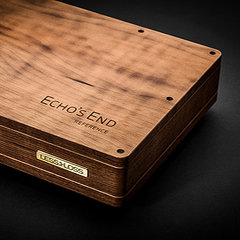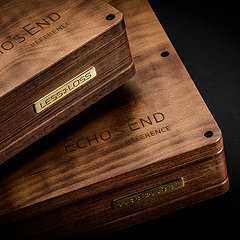Volume Control OptionWe seek the most desirable type of volume control. Would it be a passive preamp? An active preamp? Would it be digital? Analogue? Discrete? Perhaps a potentiometer? What are the losses involved in adjusting the volume level? Can these losses be completely overcome and avoided altogether? Do we really need pre-amps? All of these questions are answered here. LessLoss now offers a completely distortionless volume control option integrated into the DAC 2004. We would not offer it if we weren't sure that it represents indeed the best possible solution to the problem. To adjust the pristine signal of the DAC 2004 by any other means is a compromise. We offer you this information so that you may find out how it's done correctly.
DAC 2004 :: The analogue output is already pristine.In the DAC 2004, the signals for the analogue outputs at the back of the unit are accessed from the circuit board via very short solid silver wires suspended in mid-air. Between these silver wires and the very output legs of the Burr-Brown PCM 1704 converter chips are only 7 top-quality components (5 for the unbalanced RCA outputs). The purpose of these components is to transform the output of the converter chip from a signal composed almost entirely of current swings to one composed almost entirely of voltage swings. This is known as I/U conversion, or the output stage. In the case of the balanced outputs, the signal is also balanced to provide near-lossless signal transfer over a distance of cable. Please note that the DAC 2004 has absolutely no capacitors in the signal path from DAC chip to external plug. The other purpose of the output stage is to provide the desired voltage level to the output signal. In home hi-fi applications this is usually 2 Volts RMS, but it can be adjusted during the manufacturing process to whatever desireable level is needed for the given application. This can be any level up to 4 Volts RMS. This involves changing a couple of resistors. DAC 2004 volume control :: What are the options?Once the output level is set via the above stated shunt-to-ground resistor, it corresponds to the maximum volume level. Volume controls usually lower the volume level to acceptable listening levels. This can be done in various ways. In the digital domain prior to D/A conversion.This is the worst way to control volume level. You not only loose bit-depth of your signal, you also introduce rounding math errors, and ultimately reduce the signal/noise ratio of the actual conversion process. You do not utilize the DAC chip in its best operating conditions, and receive a distorted output signal as a result. In the analogue domain after D/A conversion.This is much better. We not only use the original bit-to-bit digital sound signal, we are also using the DAC chip to its full potential and are receiving the closest possible reproduction of the original soundwave which was encoded into the digital domain. With active components in the signal path.All active components need a power supply. Adding components with their own power supplies to an already pristine signal only in order to lower the volume level will inevitably add distortion due to the interference that the power supply carries. Even if the power supply would be ideally clean, then the losses would be equal to the losses incurred by the active components themselves, such as resistors and transistors, which would be placed in the signal path. This could also be a potentiometer used with a linear amplifier. With passive components in the signal path.Passive components, such as resistors or transformers, when placed in the signal path, affect both the level and the quality of the signal. No transformer has a completely linear behaviour, especially in the low audio frequencies. Quality discreet switches always have a more exact contact than any type of potentiometer. With passive components not directly in the signal path, but shunt-to-ground.This is the best possible method of volume control, and this is the method we utilize in the DAC 2004. This is a passive buffered shunt-to-ground volume control, with 21 discreet positions, with nothing directly in the signal path. This type of volume control does nothing other than switches the very output voltage of the output stage of the DAC 2004. The load on the output leg of the DAC chip remains exactly the same for all volume levels, however the output level is adjusted before the output stage. The DAC 2004 without volume control has an output buffer set at any level the user desires. However, the volume control option allows the user to actively choose the very output level which is desired. If you use an external processor such as an external volume control (for some reason), you simply leave the DAC 2004 volume control at the highest level of the volume knob. The significance of this is: by using our volume control, it would be the equivalent of customizing the DAC 2004 to a special output level at each click of the dial. This is normally done by changing the value of the resistors used by means of the soldering iron. It is the very best possible volume control, because nothing whatsoever (not even a millimeter of silver wire) is added to the signal path, and in effect you would have not only the exact same sound as without any volume control whatsoever, but you'd have it at the very listening level you desire. The best solution means, quite simply, the least loss.No external type of volume control can compete. We have tested with/without the volume control and it is impossible for us to measure any difference between the version with soldered resistors (schematically set output level) and the addition of switching contacts to achieve the variable output signal level. In fact, outboard volume control is worse already by logical conclusion of the following, even if the outboard volume control itself were completely utopian: Count the minimum number of parts that the signal must pass through: A cable connector at the preamp. A plug at the preamp. Internal wiring in the preamp (using plastics, guaranteed). Internal unbalancing schematics (in the case of balanced signals) at the preamp. Active or passive volume adjustment in the preamp. Balancing schematics. More internal wiring, an external plug. Another connector to the cable which goes to the power amps. In our solution all of the above are bypassed. You have the possiblity to run direct cabling from DAC to power amps, which, ideally, should be placed directly next to the loudspeakers. What power amps are compatible?The input impedance of the amp used in conjunction with the DAC 2004 with volume control option can be anywhere from 10K - 100K Ohm. The input sensitivity can be from 1V - 4V. |
- Products
- Power Cables
-
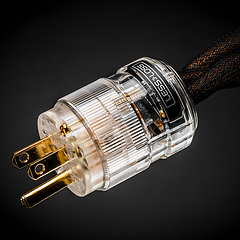 C-MARC™ Prime
The must have foundation for any sound system today.
From
$
486
C-MARC™ Prime
The must have foundation for any sound system today.
From
$
486
-
 C-MARC™ Classic
The unique super-cable power cord everyone's talking about.
From
$
1148
C-MARC™ Classic
The unique super-cable power cord everyone's talking about.
From
$
1148
-
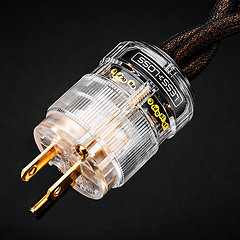 C-MARC™ Classic Entropic Process
The peerless, advanced Classic masterpiece.
From
$
1934
C-MARC™ Classic Entropic Process
The peerless, advanced Classic masterpiece.
From
$
1934
-
 C-MARC™ Stellar Entropic Process
The crown jewel for highest performance power connection.
From
$
2450
C-MARC™ Stellar Entropic Process
The crown jewel for highest performance power connection.
From
$
2450
-
- Loudspeaker Cables
- Interconnect Cables
-
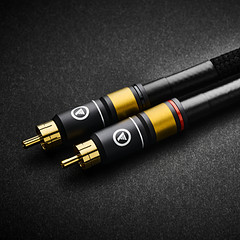 RCA C-MARC™
Cotton-clad true Litz • Whopping 2.3mm2 polarities
From
$
850
RCA C-MARC™
Cotton-clad true Litz • Whopping 2.3mm2 polarities
From
$
850
-
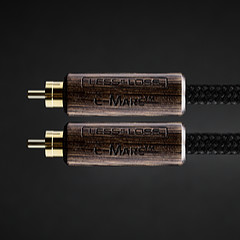 RCA C-MARC™ Entropic Process
Our finest RCA cable • Polished Wenge barrels
From
$
1428
RCA C-MARC™ Entropic Process
Our finest RCA cable • Polished Wenge barrels
From
$
1428
-
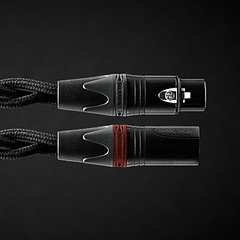 XLR C-MARC™
A hand-braided cotton-clad unique Litz construction
From
$
950
XLR C-MARC™
A hand-braided cotton-clad unique Litz construction
From
$
950
-
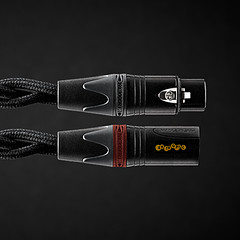 XLR C-MARC™ Entropic Process
Stratospheric performance for the audio connoisseur
From
$
1615
XLR C-MARC™ Entropic Process
Stratospheric performance for the audio connoisseur
From
$
1615
-
- Digital Cables
-
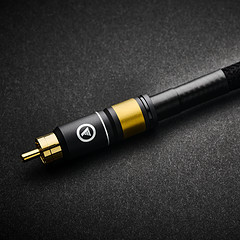 RCA Digital C-MARC™
Cotton-clad unique Litz design • Made only by LessLoss
From
$
510
RCA Digital C-MARC™
Cotton-clad unique Litz design • Made only by LessLoss
From
$
510
-
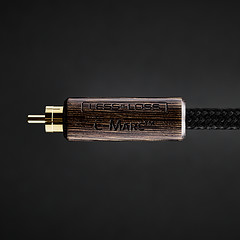 RCA Digital C-MARC™ Entropic Process
Possibly the most subtle digital cable on the planet
From
$
858
RCA Digital C-MARC™ Entropic Process
Possibly the most subtle digital cable on the planet
From
$
858
-
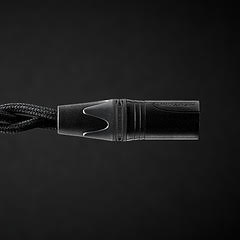 XLR Digital C-MARC™
Featuring a whopping 3 x 2.3mm2 Litz construction
From
$
570
XLR Digital C-MARC™
Featuring a whopping 3 x 2.3mm2 Litz construction
From
$
570
-
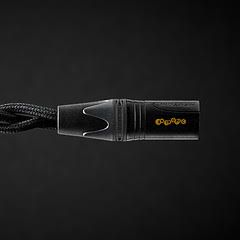 XLR Digital C-MARC™ Entropic Process
Stratospheric performance for the audio connoisseur
From
$
969
XLR Digital C-MARC™ Entropic Process
Stratospheric performance for the audio connoisseur
From
$
969
-
- Grounding Cables
- Bulk Wire and Cable
- Signal Conditioners
-
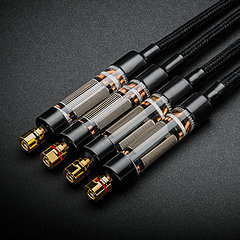 Firewall for Loudspeakers
Firewall for Loudspeakers
C-MARC™ Plug-and-Play Speaker signal conditioning like you've never imagined From $ 1656 -
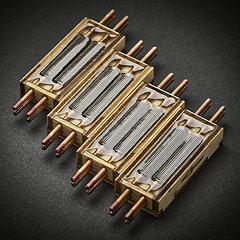 Firewall for Loudspeakers
Firewall for Loudspeakers
DIY version for Self-Installation For the Do-It-Yourself project enthusiast • Solder yourself From $ 800 -
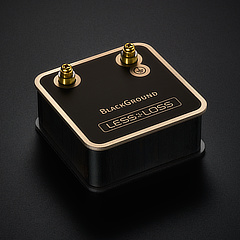 BlackGround DIY
Voltage-ground interface for a variety of applications
From
$
446
BlackGround DIY
Voltage-ground interface for a variety of applications
From
$
446
-
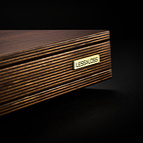 BlackGround 8x/10x Speaker Base
Plug-and-play loudspeaker signal conditioner
From
$
3096
BlackGround 8x/10x Speaker Base
Plug-and-play loudspeaker signal conditioner
From
$
3096
-
- Power Conditioners
-
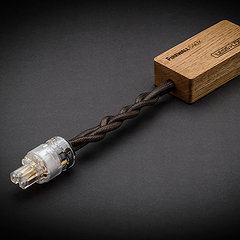 Firewall 640x
Plug-and-play solution for any powered gear
Firewall 640x
Plug-and-play solution for any powered gear
C-MARC™ Entropic Process and standard lead versions From $ 654 -
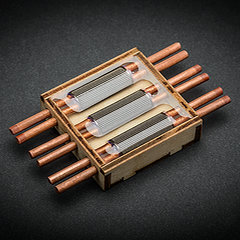 Firewall 640x DIY for Self-Installation
Self-solder and save!
From
$
320
Firewall 640x DIY for Self-Installation
Self-solder and save!
From
$
320
-
 BlackGround DIY
Voltage-ground interface for a variety of applications
From
$
446
BlackGround DIY
Voltage-ground interface for a variety of applications
From
$
446
-
 BlackGround 6x/10x Power Base
Plug-and-play power conditioner
From
$
2350
BlackGround 6x/10x Power Base
Plug-and-play power conditioner
From
$
2350
-
- Power Distributors
- Equipment Feet
- Field Conditioner
- DACs
- Power Cables
- Reviews
- This is definitely the cable to go for. It will almost literally blow your mind. – March 2012, Puresound Magazine
-
I was intrigued by the unanimously positive reviews garnered by these products ...
– by user Raymond Eye
Leaves you speechless
Sensational cables
BEST purchase I've made
Top notch performance
It's a steal
Musical... liquid... 3D
It's not subtle
More than an upgrade
Best I've heard so far
Stellar service
Sounds like a new system
Much more lifelike
Emotional flow
Overwhelming results
More dimensional
Sound is transformative
We were all astounded
Transformed my listening
Sounds so cohesive
Emotionally engaging
- Where to Start
- Free Newsletter
- Newsletter Archive
- B-Stock Alerts
- Shopping Tools
-
Shipping
- Free Shipping Learn about our international shipping policy
-
Return Options
Our satisfaction guarantee
and return policy -
Customs
UPS expedites local
customs clearance
-
Transaction
- Conditions of Sale Agreement for a smooth business transaction
- Privacy Policy We pledge to keep your information private
-
Terms of Use
Business policies
and agreements
-
Account
-
- Contact Us
-
Meet the Designers
-
- Care to share of your personal experience with our products? We'd be happy to post it!
- Want to learn more about our activities? Our Newsletter is both free and spam-free.
hi-res photos, brochures
logos, press releases, and
print-friendly PDF downloads. -
Contact Us
Connect with Us
-
